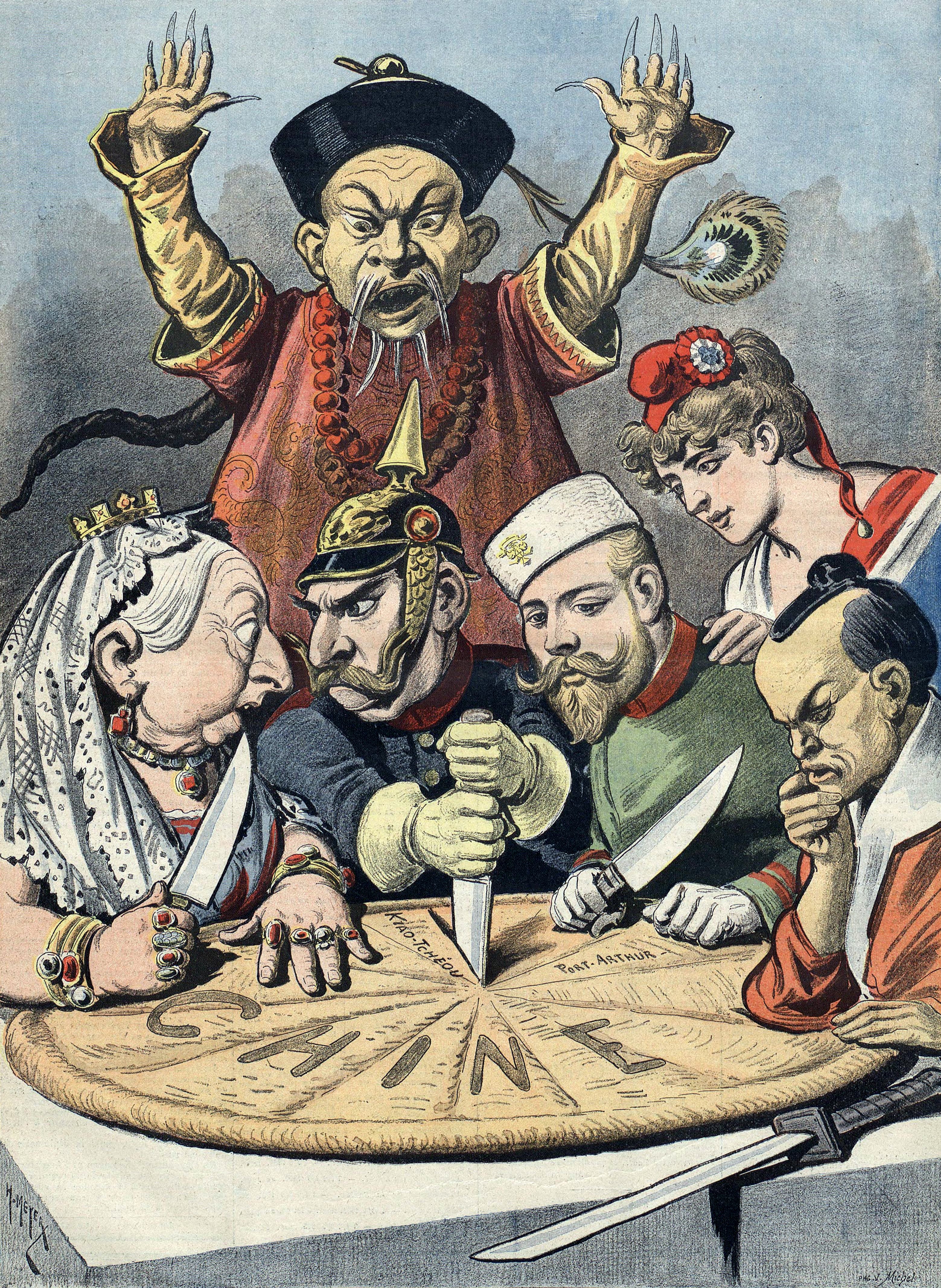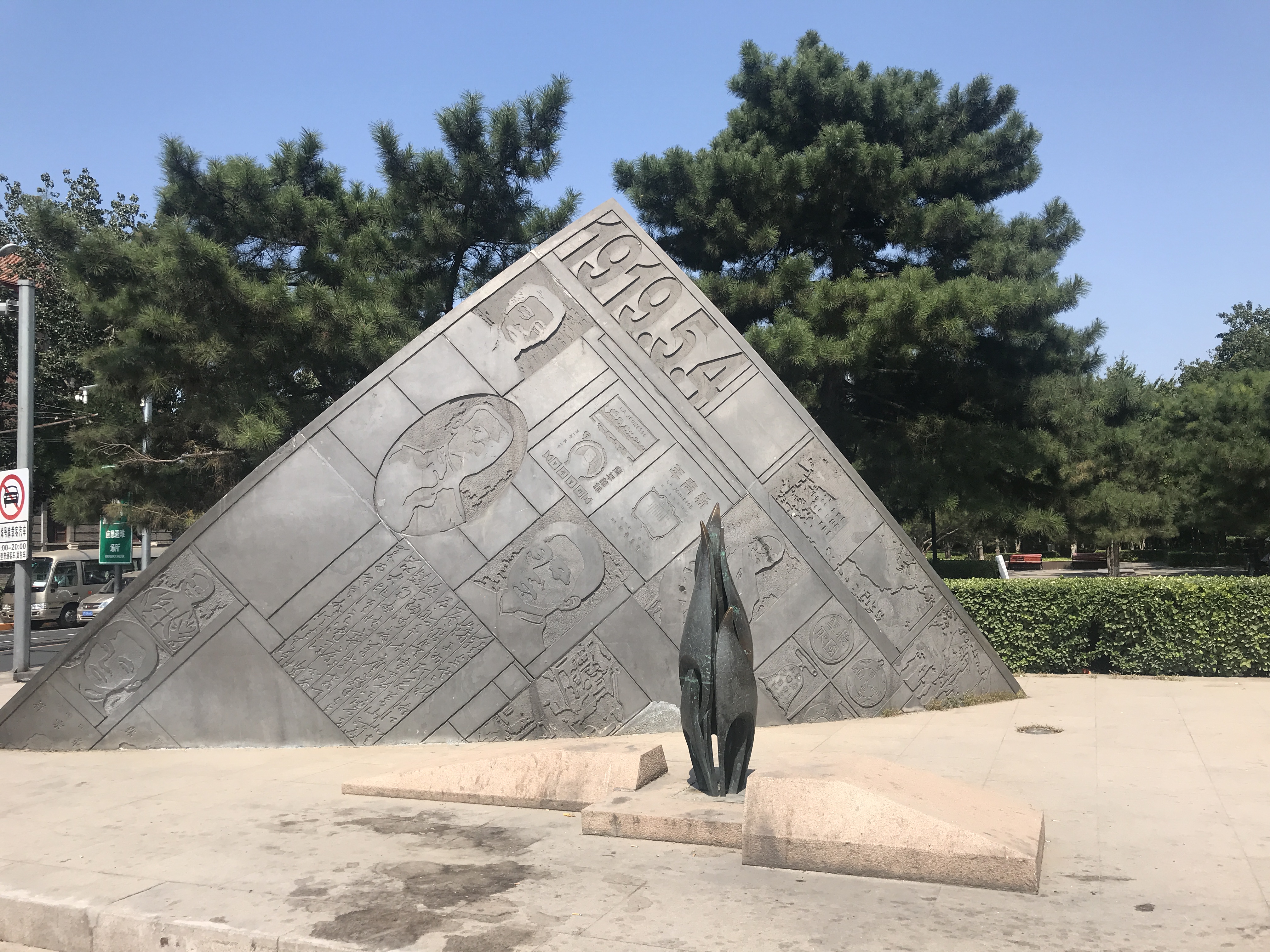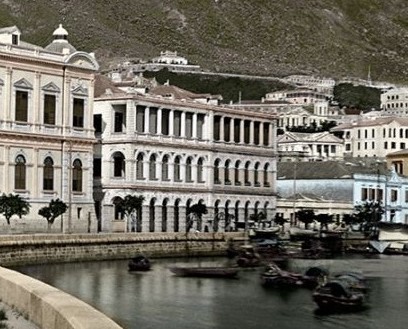|
Treaty Port
Treaty ports (; ) were the port cities in China and Japan that were opened to foreign trade mainly by the unequal treaties forced upon them by Western powers, as well as cities in Korea opened up similarly by the Qing dynasty of China (before the First Sino-Japanese War) and the Empire of Japan. Chinese treaty ports The British established their first treaty ports in China after the First Opium War by the Treaty of Nanking in 1842. As well as ceding the island of Hong Kong to Great Britain in perpetuity, the treaty also established five treaty ports at Shanghai, Guangzhou (Canton), Ningbo, Fuzhou, and Xiamen (Amoy). The following year the Chinese and British signed the Treaty of the Bogue, which added provisions for extraterritoriality and the most favored nation status for the latter country. Subsequent negotiations with the Americans (1844 Treaty of Wanghia) and the French (1844 Treaty of Whampoa) led to further concessions for these nations on the same terms as the Britis ... [...More Info...] [...Related Items...] OR: [Wikipedia] [Google] [Baidu] |
Unequal Treaty
The unequal treaties were a series of agreements made between Asian countries—most notably Qing dynasty, Qing China, Tokugawa shogunate, Tokugawa Japan and Joseon, Joseon Korea—and Western countries—most notably the United Kingdom of Great Britain and Ireland, United Kingdom, French Third Republic, France, German Empire, Germany, Austria-Hungary, Kingdom of Italy, Italy, the United States and Russian Empire, Russia—during the 19th and early 20th centuries. They were often signed following a military defeat suffered by the Asian party, or amid military threats made by the Western party. The terms specified obligations to be borne almost exclusively by the Asian party and included provisions such as the cession of territory, payment of reparations, opening of treaty ports, relinquishment of the right to control tariffs and imports, and granting of extraterritoriality to foreign citizens. With the rise of Chinese nationalism and anti-imperialism in the 1920s, both the Kuomint ... [...More Info...] [...Related Items...] OR: [Wikipedia] [Google] [Baidu] |
Treaty Of Whampoa
The Treaty of Whampoa () was an unequal treaty between the Kingdom of France and the Qing dynasty of China, which was signed by Qiying and Théodore de Lagrené on October 24, 1844, aboard the warship ''L’Archimède''. Terms China was to grant the same privileges to the Kingdom of France as to Britain in the Treaty of Nanking and subsequent treaties. The privileges included the opening of five harbours to French merchants, extraterritorial privileges French citizens in China, a fixed tariff on Sino-French trade and the right of France to station consuls in China. Toleration of Christianity Although French Prime Minister François Guizot had given Lagrené only a mandate to negotiate a commercial treaty with France, Lagrené decided that he wanted to enhance France's international prestige by securing a rescission of Yongzheng Emperor's prohibition of Christianity in China from 1724. France could thus become the protectorate of Catholics in China, like France in the Levant. Aft ... [...More Info...] [...Related Items...] OR: [Wikipedia] [Google] [Baidu] |
Special Economic Zones Of China
The Special Economic Zones of China (SEZ) are designated areas with economic policies and regulations designed to attract foreign business. These zones have more Free market, market-oriented business regulations compared to the rest of the country. They were established to attract foreign investment, boost different forms of economic growth, and facilitate experimentation with market reforms. Many of these zones can be attributed to the policy of paramount leader of China Deng Xiaoping during the early 1980 in China, 1980s. One of the larger reforms under Deng was establishing four SEZs along the South-eastern coast of China, with Shenzhen Special Economic Zone, Shenzhen, Shantou Special Economic Zone, Shantou, and Zhuhai Special Economic Zone, Zhuhai located in Guangdong Province, Guangdong province and Xiamen Special Economic Zone, Xiamen located in Fujian Province, Fujian province. These initial SEZs were all established from 1980 to 1981. As of 2024, there have been 3 additio ... [...More Info...] [...Related Items...] OR: [Wikipedia] [Google] [Baidu] |
May Fourth Movement
The May Fourth Movement was a Chinese cultural and anti-imperialist political movement which grew out of student protests in Beijing on May 4, 1919. Students gathered in front of Tiananmen to protest the Chinese government's weak response to the Treaty of Versailles decision to allow the Empire of Japan to retain territories in Shandong that had been surrendered by the German Empire after the Siege of Tsingtao in 1914. The demonstrations sparked nationwide protests and spurred an upsurge in Chinese nationalism, a shift towards political mobilization, away from cultural activities, and a move towards a populist base, away from traditional intellectual and political elites. The May Fourth demonstrations marked a turning point in a broader anti-traditional New Culture Movement (1915–1921) that sought to replace traditional Confucian values and was itself a continuation of late Qing reforms. Even after 1919, these educated "new youths" still defined their role with a tradi ... [...More Info...] [...Related Items...] OR: [Wikipedia] [Google] [Baidu] |
Anti-Qing Sentiment
Anti-Qing sentiment () refers to a sentiment principally held in China against the rule of the Manchu people, Manchu-led Qing dynasty (1644–1912), which was criticized by opponents as being "barbaric". Already hated by the Han Chinese because of the Manchus' ancestors, the Jurchen people, for the Jin–Song wars and the war crimes against them that followed (notably the Jingkang incident) centuries ago, the Qing was later accused of destroying traditional Han culture by enforcing policies such as Tifayifu, forcing Han to wear their hair in a Queue (hairstyle), queue in the Manchu style. It was blamed for suppressing Chinese science, Criticism of Qing dynasty's economic performance, causing China to be transformed from the world's premiere power to a poor, backwards nation. The people of the Eight Banners lived off Social welfare in China, government pensions unlike the general Han civilian population. The rallying slogan of anti-Qing activists was "Fǎn Qīng fù Míng" (; "Ove ... [...More Info...] [...Related Items...] OR: [Wikipedia] [Google] [Baidu] |
HSBC
HSBC Holdings plc ( zh, t_hk=滙豐; initialism from its founding member The Hongkong and Shanghai Banking Corporation) is a British universal bank and financial services group headquartered in London, England, with historical and business links to East Asia and a multinational corporation, multinational footprint. It is the List of banks in Europe, largest Europe-based bank by total assets, ahead of BNP Paribas, with US$3.098 trillion as of September 2024. This also puts it as the List of largest banks, 7th largest bank in the world by total assets behind Bank of America, and the 3rd largest State ownership, non-state owned bank in the world. In 2021, HSBC had $10.8 trillion in assets under custodian bank, custody (AUC) and $4.9 trillion in assets under administration (AUA). HSBC traces its origin to a Hong (business), ''hong'' trading house in British Hong Kong. The bank was established in 1865 in Hong Kong and opened branches in Shanghai in the same year. It was ... [...More Info...] [...Related Items...] OR: [Wikipedia] [Google] [Baidu] |
Chongqing
ChongqingPostal Romanization, Previously romanized as Chungking ();. is a direct-administered municipality in Southwestern China. Chongqing is one of the four direct-administered municipalities under the State Council of the People's Republic of China, Central People's Government, along with Beijing, Shanghai, and Tianjin. It is the only directly administrated municipality located deep inland. The municipality covers a large geographical area roughly the size of Austria, which includes several disjunct urban areas in addition to Chongqing proper. Due to its classification, the municipality of Chongqing is the List of largest cities, largest city proper in the world by population, though Chongqing is not the most populous urban area. The municipality of Chongqing is the only Chinese city with a resident population of over 30 million; however, this number includes its large rural population. In 2020, Chongqing surpassed Shanghai as China's largest municipality by urban populati ... [...More Info...] [...Related Items...] OR: [Wikipedia] [Google] [Baidu] |
Nationalist Government
The Nationalist government, officially the National Government of the Republic of China, refers to the government of the Republic of China (1912–1949), Republic of China from 1 July 1925 to 20 May 1948, led by the nationalist Kuomintang (KMT) party. Following the outbreak of the 1911 Revolution, Xinhai Revolution, revolutionary leader Sun Yat-sen was elected to be China's List of Presidents of the Republic of China, provisional president and founded the Provisional Government of the Republic of China (1912), Provisional Government of the Republic of China. To preserve national unity, Sun ceded the presidency to military strongman Yuan Shikai, who established the Beiyang government. After Empire of China (1915-1916), a failed attempt to install himself as Emperor of China, Yuan died in 1916, leaving a power vacuum which resulted in China being divided into several Warlord Era, warlord fiefs and rival governments. They were nominally Chinese reunification (1928), reunified in 1 ... [...More Info...] [...Related Items...] OR: [Wikipedia] [Google] [Baidu] |
Second World War
World War II or the Second World War (1 September 1939 – 2 September 1945) was a World war, global conflict between two coalitions: the Allies of World War II, Allies and the Axis powers. World War II by country, Nearly all of the world's countries participated, with many nations mobilising all resources in pursuit of total war. Tanks in World War II, Tanks and Air warfare of World War II, aircraft played major roles, enabling the strategic bombing of cities and delivery of the Atomic bombings of Hiroshima and Nagasaki, first and only nuclear weapons ever used in war. World War II is the List of wars by death toll, deadliest conflict in history, causing World War II casualties, the death of 70 to 85 million people, more than half of whom were civilians. Millions died in genocides, including the Holocaust, and by massacres, starvation, and disease. After the Allied victory, Allied-occupied Germany, Germany, Allied-occupied Austria, Austria, Occupation of Japan, Japan, a ... [...More Info...] [...Related Items...] OR: [Wikipedia] [Google] [Baidu] |
Russian Revolution
The Russian Revolution was a period of Political revolution (Trotskyism), political and social revolution, social change in Russian Empire, Russia, starting in 1917. This period saw Russia Dissolution of the Russian Empire, abolish its monarchy and adopt a socialist form of government following two successive revolutions and Russian Civil War, a civil war. It can be seen as the precursor for Revolutions of 1917–1923, other revolutions that occurred in the aftermath of World War I, such as the German Revolution of 1918–1919. The Russian Revolution was a key events of the 20th century, key event of the 20th century. The Russian Revolution was inaugurated with the February Revolution in 1917, in the midst of World War I. With the German Empire inflicting defeats on the front, and increasing logistical problems causing shortages of bread and grain, the Russian Army was losing morale, with large scale mutiny looming. Officials were convinced that if Tsar Nicholas II abdicated ... [...More Info...] [...Related Items...] OR: [Wikipedia] [Google] [Baidu] |
Old Bund
The Old Bund (; Ningboese: lau2 nga3thae1), originally known as the North Riverbank (; Ningboese: kaon1poh4nge3), is a waterfront (area), waterfront area in Jiangbei District, Ningbo, Jiangbei District, Ningbo. The Old Bund is on the north bank of the Yong River (Zhejiang), Yong River. It was the site of the Port of Ningbo since 1840s till late 1990s. The North Riverbank was the result of Treaty of Nanking, and witnessed the initiation and development of Ningbo Commercial Group. History The Old Bund sat piers of the Port of Ningbo, and all the trade between Ningbo and Japan, Korea and Southeast Asia was made through it. The trading tracked back to 1842 when the Sino-Britain Treaty of Nanking was signed, and Ningbo was thereafter a trading port. Ever since then the westerners came to Ningbo. However, ships could not make it into the ancient port, and therefore the North Riverbank came into being. In 1844, Ningbo was officially opened as a trading port, the North Riverbank was ... [...More Info...] [...Related Items...] OR: [Wikipedia] [Google] [Baidu] |








